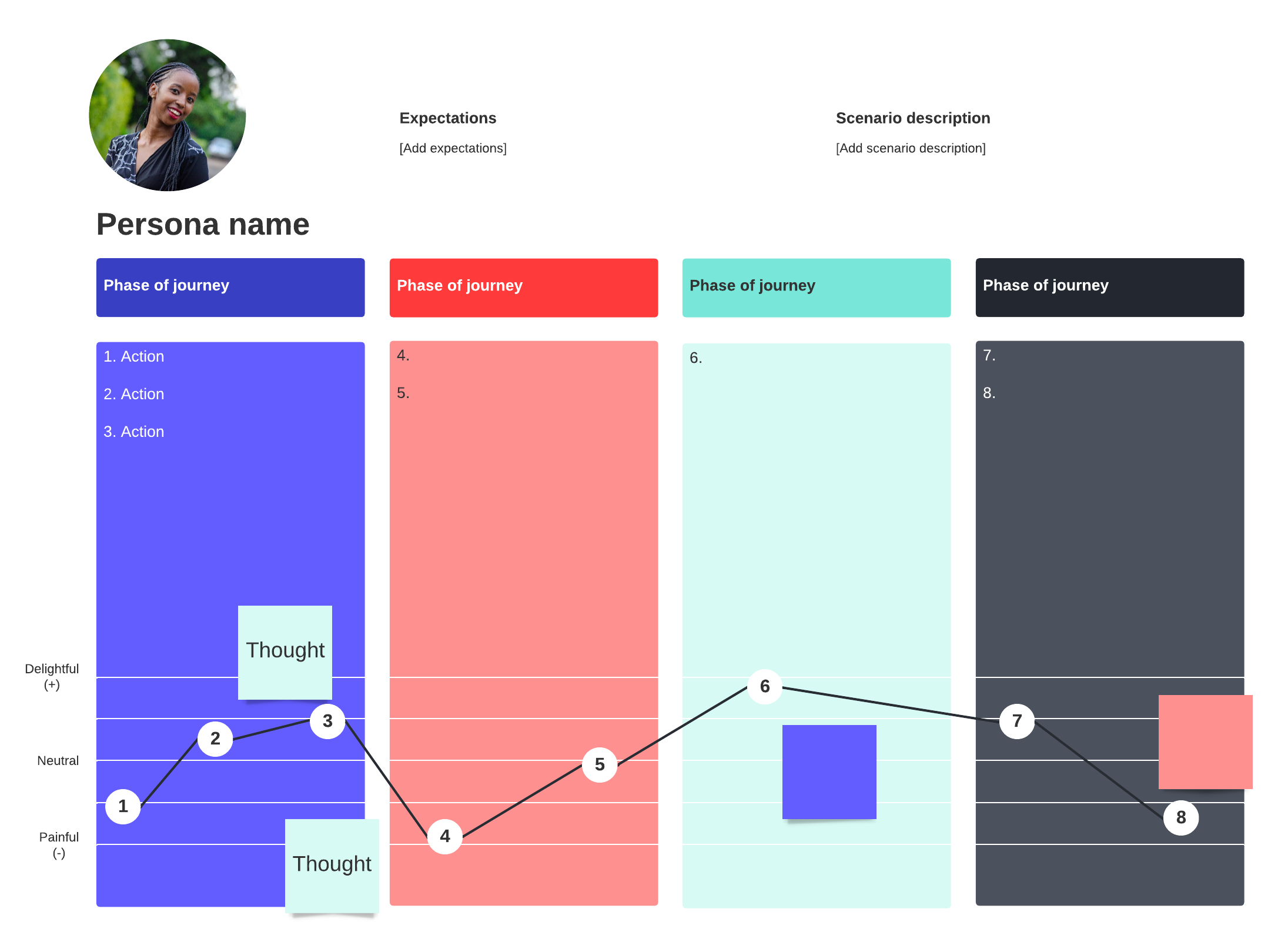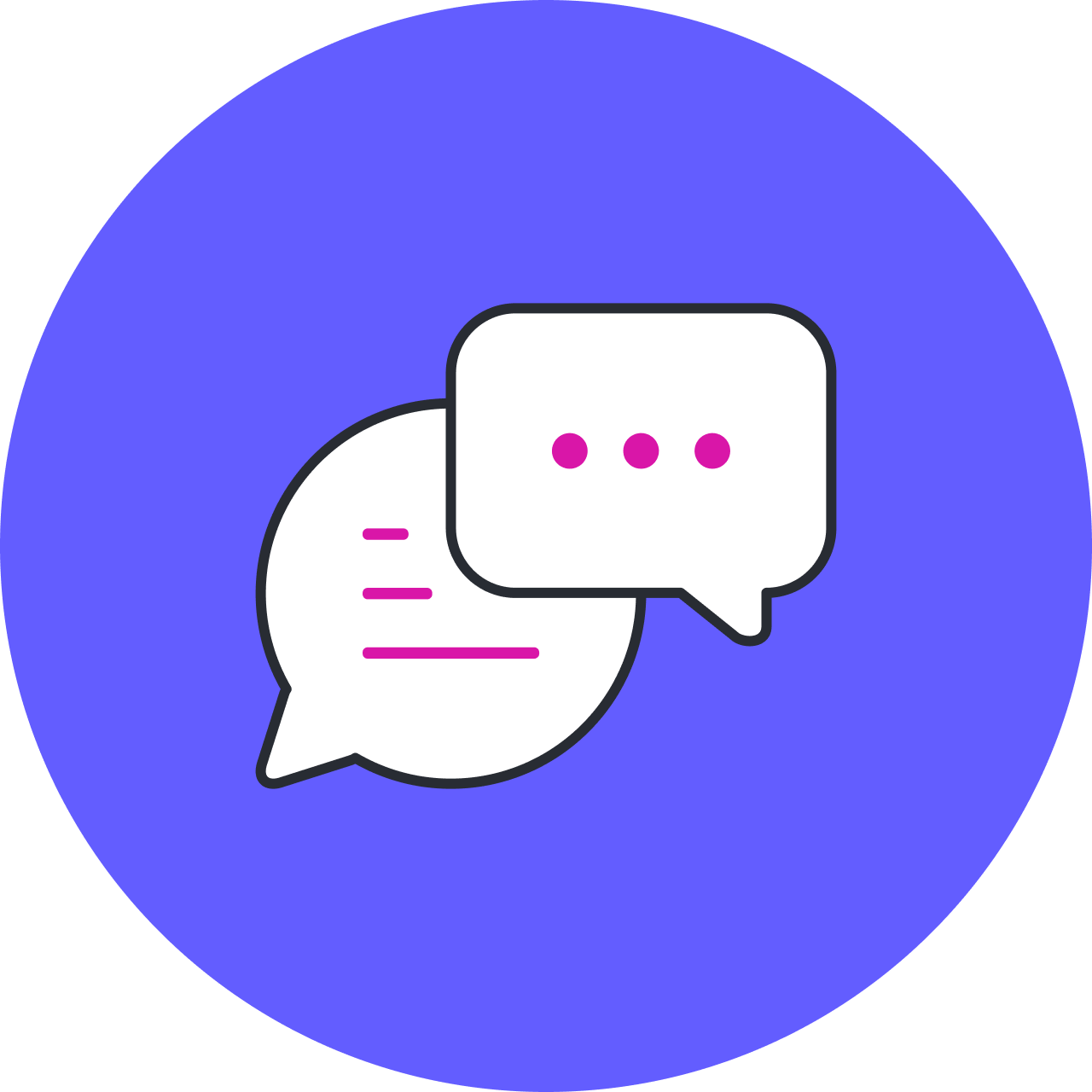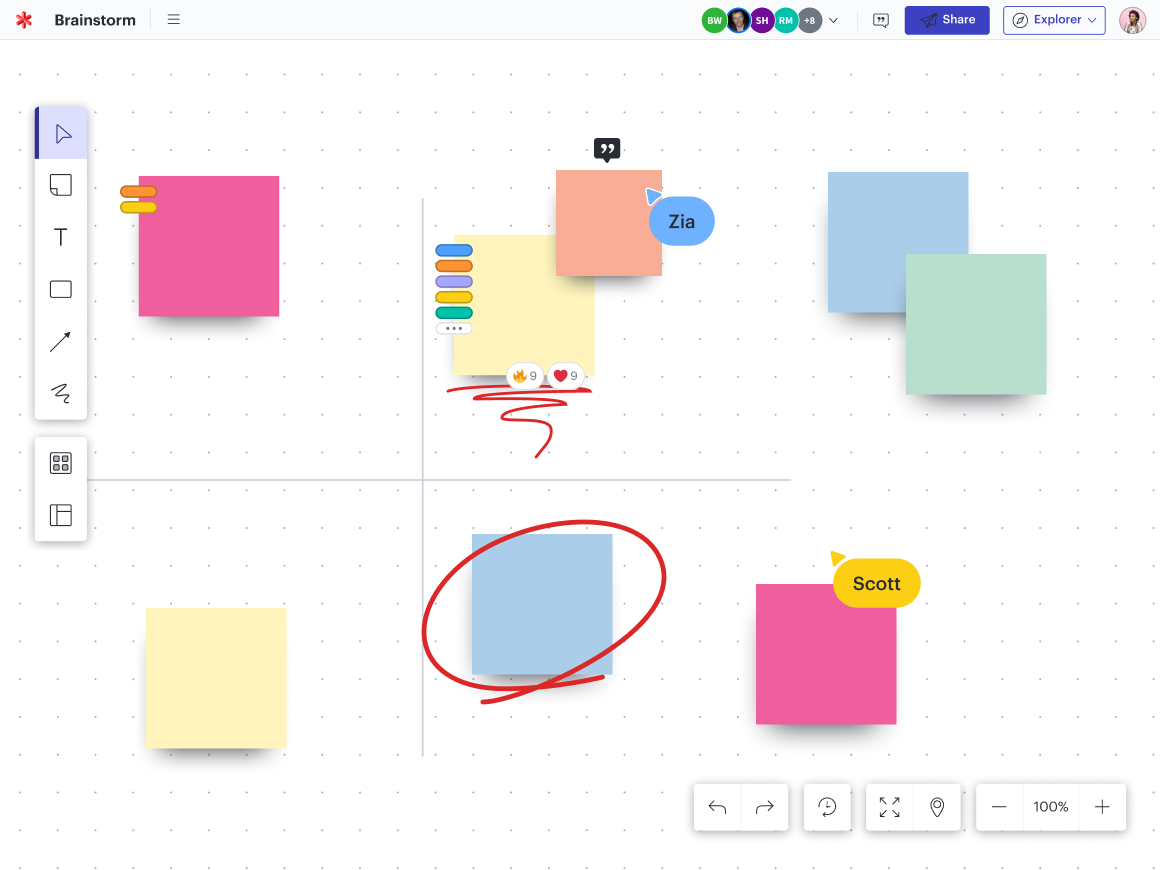
8 common product innovation mistakes (and what to do instead)
Reading time: about 10 min
Topics:
Business growth depends on product innovation—with more than 25% of revenue and profits attributed to new products. Yet, McKinsey found that more than 50% of all product launches fail to hit business targets. That’s a staggeringly high failure rate for an investment that is so closely tied to business success.
So what exactly is going on?
Leaders overwhelmingly agree that product innovation is important. But there’s little available guidance on how to actually innovate. This means many teams are prone to make mistakes in the process, which can impact overall success.
Jeff Rosenbaugh, senior director of professional services at Lucid, and Christopher Bailey, principal professional services consultant at Lucid, have helped organizations throughout the last decade scale innovation.
We sat down with them to talk about the most common mistakes organizations make in the innovation process and what to do instead.
Mistakes organizations make in the product innovation process
1. Skipping important research early on
What comes first: a problem or a solution? If you said a problem, you’d be right. But too often, teams will jump ahead in the innovation process to start building a solution right away—before doing any homework to actually validate that there’s a problem worth solving.
“Teams often start the process with a solution in mind that they’re excited about or proud of,” said Bailey. “But by jumping straight into building the solution, teams skip the important steps of researching their customer and properly understanding the problem.”
This ultimately leads to products that don’t address customer pain points. In other words, spending time and money on a solution for a problem that doesn’t exist.
What to do instead: “Fall in love with the problem, not the solution,” said Rosenbaugh. When you’re beginning the product innovation process, take a few steps back to really consider:
- Who is your customer?
- What problem are they trying to solve?
Having passion for the problem helps you gain a deeper understanding of the different ways the problem expresses itself to different customers. This way, you can design a solution that your customers will actually want to purchase.
2. Focusing on the wrong problem from the get-go
Another common product innovation mistake is related to the first: focusing on the wrong problem. Many teams conduct their research around the problem they—as a product team—are trying to solve. But it’s really about understanding the problem their customer is trying to solve.
Focusing on the wrong problem leads to biased questions, research, and results—and ultimately, the wrong product.
What to do instead: Keep the customer front and center in the process. Build personas and user journey maps and use these as a guide to identify (and stay focused) on the customer’s real problem. Don’t be afraid to regularly ask potential customers whether you’re focusing on the right thing—see if you surprise and delight them after effectively narrowing in on their problem.

3. Treating each part of the process like a one-and-done activity
Innovation doesn’t follow a linear process—it’s iterative. This means teams will likely have to jump back in the process and revisit steps as they continue to learn. Teams that do treat each part of the process like a box to check miss out on the ongoing experimentation and iteration necessary for continual innovation, and are less likely to incorporate what they’re learning.
“If you’re not willing to go back a step in the innovation process, you’re probably too attached to your solution,” said Bailey. “Remember that you’re going to continue to learn more about your customer and what they need as you progress. Those learnings should influence changes to your solution.”
What to do instead: Check in with your team and leadership regularly to review learnings and evaluate if you should pivot course, park ideas, or persevere down the current path. You may even consider creating criteria to help determine when you’re ready to move on in the process.
To make it easy to evaluate your findings and adjust as you learn, use robust documentation. Treat the artifacts you create throughout the process (like personas, brainstorming boards, and wireframes) as living documents and modify them as you go.
This document repository—what we refer to as an innovation repository—creates a “trail of crumbs” that makes it easy for you to retrace steps in the innovation process.

Learn how to create a document repository to help your team make innovation a repeatable, scalable process.
Read the blog4. Leaving ideation completely unstructured
Divergent thinking—ideation intended to produce a wide array of ideas—is an important part of the innovation process. Unfortunately, many organizations miss out on some of the best ideas because they leave this part of the process unstructured.
“When the goal is to generate tons of creative ideas, teams often assume the best way to do this is through wide-open brainstorms,” said Rosenbaugh. “But to truly maximize ideas, you need to set constraints.”
This is because a lack of structure typically leads to a lack of focus. Anyone who does their best work when a deadline approaches can attest to this. Without clear limitations to direct your ideation process, it will be harder to generate relevant and usable ideas.
What to do instead: Add structure and constraints to your ideation process. Although it may seem that constraints limit ideas, they actually do the opposite: By providing ideation parameters, team members are forced to broaden their perspectives and search for solutions in ways they wouldn’t have thought of otherwise.
For example, consider possible constraints like deadlines, budget, or business requirements. You can also add structure ahead of the ideation process with an ideation strategy that clarifies logistics such as what topics will be discussed and how long you will spend on each part of the session.
A virtual whiteboard like Lucidspark can help fuel your next brainstorming session by providing the right mix of structure and flexibility. You can add constraints to brainstorms to guide the ideation process but still have the flexibility of an infinite canvas, freeform drawing, and more to collaborate effectively.

5. Asking customers only “fluff” questions
Customer feedback is another important part of the product innovation process. After all, who understands the customer’s pain points better than the customers themselves? But you have to ask the right questions to get useful feedback.
Too often, product teams will ask vague or future-focused questions that can lead to biased or unhelpful answers. For instance, a question like “Would you use this product?” is too broad and focused on future, hypothetical behavior.
“Most people are terrible predictors of their own behavior,” said Bailey. “So you're going to get really bad data if you ask customers to hypothesize about the future—you could even take the wrong solution to the next stage.”
What to do instead: Ask your customers questions that pass the “Mom Test.” The Mom Test is a handbook of principles that help you ask better questions and get better answers from your customers.
The three rules of The Mom Test are:
- Talk about their life instead of your idea.
- Ask about specifics in the past instead of generics or opinions about the future.
- Talk less and listen more.
For example, instead of asking customers if they think they’d use your product in the future, ask questions that anchor people to previous experiences, such as: “In the last week, when do you think this product could have been helpful to your work?” By taking the focus away from your idea and putting the focus on past user behavior, you can elicit more accurate and helpful feedback to guide your product innovation.
6. Relying too heavily on anecdotal feedback
Many teams struggle with conducting experiments that provide empirical data and will therefore rely too heavily on anecdotal feedback from customers. While anecdotal feedback is valuable, it’s not a reliable source for making decisions about your product.
What to do instead: Back up anecdotal data with hard numbers.
“Feedback isn’t enough—you need to validate it with real-world data,” said Bailey. “This means forming hypotheses, creating benchmarks, and measuring the results from your experiments.”
It can take time to design experiments that provide enough insight to make decisions, but it’s worth it. Data is a much more reliable way to de-risk an investment than basing decisions on whether a customer “likes how it looks.”
Try the “build and learn cards” template to create strong, data-driven experiments.

7. Building too much right away
There’s a natural desire to build a full, beautiful product right away. But by building the full product instead of iterating, you won't be able to incorporate your learnings, customer feedback, and data into your product. As a result, you may end up with a solution that’s beautiful but isn’t solving the customer’s problem.
What to do instead: Embrace Agile innovation and build the product incrementally to allow for iteration and the incorporation of new insights as you go.
“By incrementally investing in the product, you reduce the risk of poor product-market fit and wasted resources down the line," said Rosenbaugh.
To avoid waste, think of how you can start smaller and scrappier. Start with an MVP (minimum viable product) that includes the minimum functionality needed to solve your customer’s problem and experiment so you can learn quickly. After each iteration, you’ll uncover important information about what to include in the next iteration of your MVP.
8. Ignoring the long-term plan
In the early stages of a new product, it’s common for teams to adopt a “whatever it takes to make this work” attitude. This short-term thinking can be beneficial early on, but remember that at some point, you’ll have to scale your idea. And teams that only focus on the short-term development process will have a harder time implementing their solution in the real world.
“This is where you need to take a step back to get a full picture of the market and put a plan in place for long-term success,” said Rosenbaugh.
What to do instead: Plan for long-term success by considering factors like go-to-market strategy, training, or hiring needs to support your product beyond its launch. These are unknown elements, so be sure to experiment with this plan in addition to the product itself. For example, if you hypothesize that your existing support team can manage the increased load of a new product, create a test to validate that and make an informed decision.
Templates like the support transition plan and demand creation strategy help teams think of all the moving pieces they need to scale their solution.

How an innovation framework helps organizations in product innovation
While product innovation is intentionally non-prescriptive, that doesn’t mean there aren’t steps and principles you can follow. That’s where an innovation framework can help.
An innovation framework addresses the pitfalls above by providing organizations with a set of tools and techniques for every part of the process. Lucid’s innovation framework is organized into three phases: conception, validation, and growth. Within those phases are five stages to guide teams from identifying the problem and ideating to testing, iterating, and scaling their solutions.

This innovation framework enables teams to:
- Focus more on the customer
- Invest incrementally in innovation
- Get stakeholder buy-in
- Scale innovation across the business
As a result, an innovation framework not only demystifies the process, but it helps teams integrate product innovation into their core operations—while avoiding the most common mistakes.

Get the guide
Check out our step-by-step guide to using Lucid's innovation framework to scale product innovation.
Check it outAbout Lucid
Lucid Software is the leader in visual collaboration and work acceleration, helping teams see and build the future by turning ideas into reality. Its products include the Lucid Visual Collaboration Suite (Lucidchart and Lucidspark) and airfocus. The Lucid Visual Collaboration Suite, combined with powerful accelerators for business agility, cloud, and process transformation, empowers organizations to streamline work, foster alignment, and drive business transformation at scale. airfocus, an AI-powered product management and roadmapping platform, extends these capabilities by helping teams prioritize work, define product strategy, and align execution with business goals. The most used work acceleration platform by the Fortune 500, Lucid's solutions are trusted by more than 100 million users across enterprises worldwide, including Google, GE, and NBC Universal. Lucid partners with leaders such as Google, Atlassian, and Microsoft, and has received numerous awards for its products, growth, and workplace culture.
Related articles
The value of a single source of truth in product development
Learn how to create a single source of truth to help your teams gain alignment, increase transparency, and move faster.
How to develop an efficient innovation process
Bringing new ideas to life is not a linear process. Let’s examine the phases of innovation and review actionable tips for making them more efficient.
Why you need an innovation strategy ASAP (with tips to get started)
You can’t innovate consistently without a strategy. Uncover all the benefits and how to get started here.
The 10 types of innovation (and why you should implement them in your organization)
There are ten different types of innovation. To truly set your org apart, you'll need to adopt as many as possible.